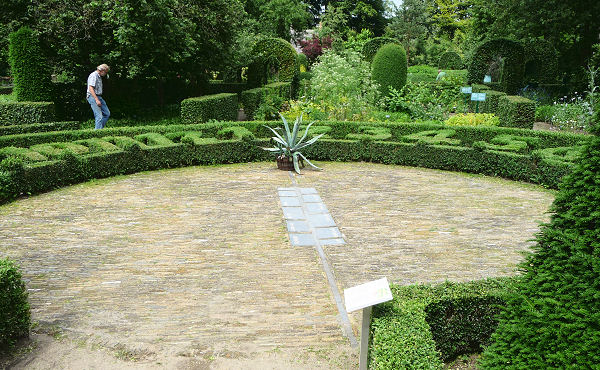
Analemmatic dials
National Heritage Museum, Arnhem

This beautiful dial is located in the herb garden of the National Heritage Museum. In between a double ellipse of box are the hours set in Arabic numerals, from 9 to 7 hr summertime, also in box. The hour points are small bumps on the inner ellipse. The date line consists of a granite strip, flanked by granite tiles with the names of the months engraved.
The sundial has an interesting history. The herb garden was laid out in 1927, the sundial much later, in 1986.
However, the sundial had several flaws. The worst problem was its orientation. The minor axis with the date line was not oriented north-south, but ran parallel to the symmetry axis of the garden, which declined 17° east from north. In addition, the date line was much too long, and the ellipse carrying the hour points was much too large.
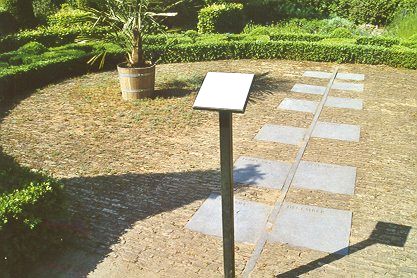
The Dutch Sundial Society pointed out the flaws already in 1992. Correspondence was carried on between the management of the museum and the Society about how the worst faults could be repaired with the least effort and cost, but this did not yield concrete results. Finally, in 2008 Rob Plomp, the new supervisor of the museum grounds, decided to tackle the problem.
We decided to leave the outer ellipse as it was, in order to keep the relationship with the rest of the garden. The inner ellipse had to be rotated, moved and scaled down. Hence, the adaptations were dealt with in the space between the two ellipses. Also some of the numerals had to be moved.
I have laid out the new sundial in January 2009. The Arnhem branch of the Kiwanis, a service club which supports the museum, had already removed the brick paving, and they laid it anew afterwards. They also transplanted quite a number of box plants. A few plants did not survive the operation, but two years later the sundial looked as if it always had been like that, especially due to the good care by René Bailly, the garden's supervisor.
The large tiles with the names of the months were recycled, as the museum has to watch its pennies too. A stonemason cut the tiles down to size. That explains why the last month reads DECE.
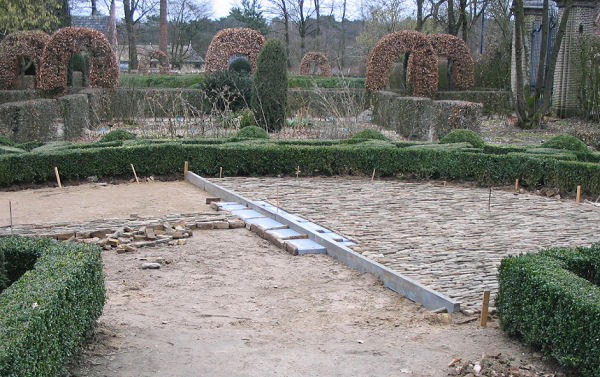
The hour points are bumps on the inner hedge row. They are the result of continuous trimming. The risk is that they 'walk away' in time. To fix the position of the hour points, the pegs in the above picture have been replaced by stones along the edge of the pavement:
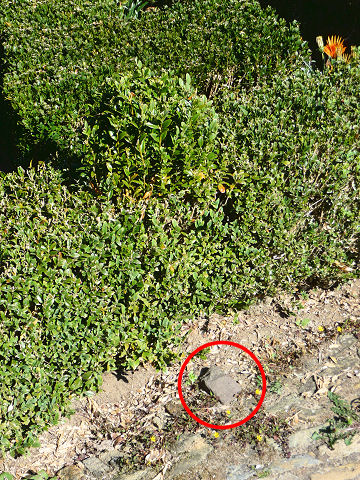
The famous Swedish naturalist Carl von Linné laid out a 'flower clock' outside his house in Uppsala, in which the plants were arranged according to the time of opening or closing. It was told that one peek out of the window was sufficient for Linné to know the time within 5 minutes accuracy. Several of these plant species have been planted around the sundial here.
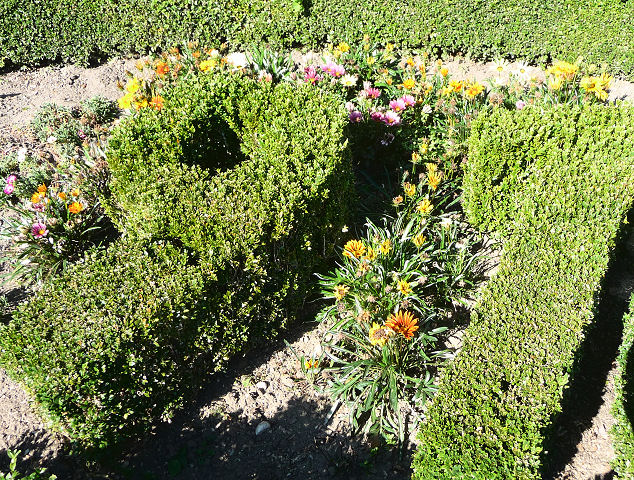
The sundial is quite accurate by now, as this lady demonstrates at 10 minutes past 3 (summertime).
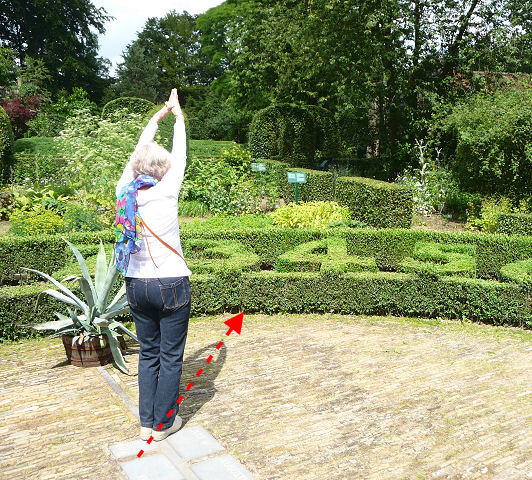
Location: 52.0° N, 5.9° E
Gnomonics: Frans Maes
Inauguration: June 2012
Website:
National Heritage Museum
Also at my website: Vertical sundial at the St. Eusebius Church in Arnhem